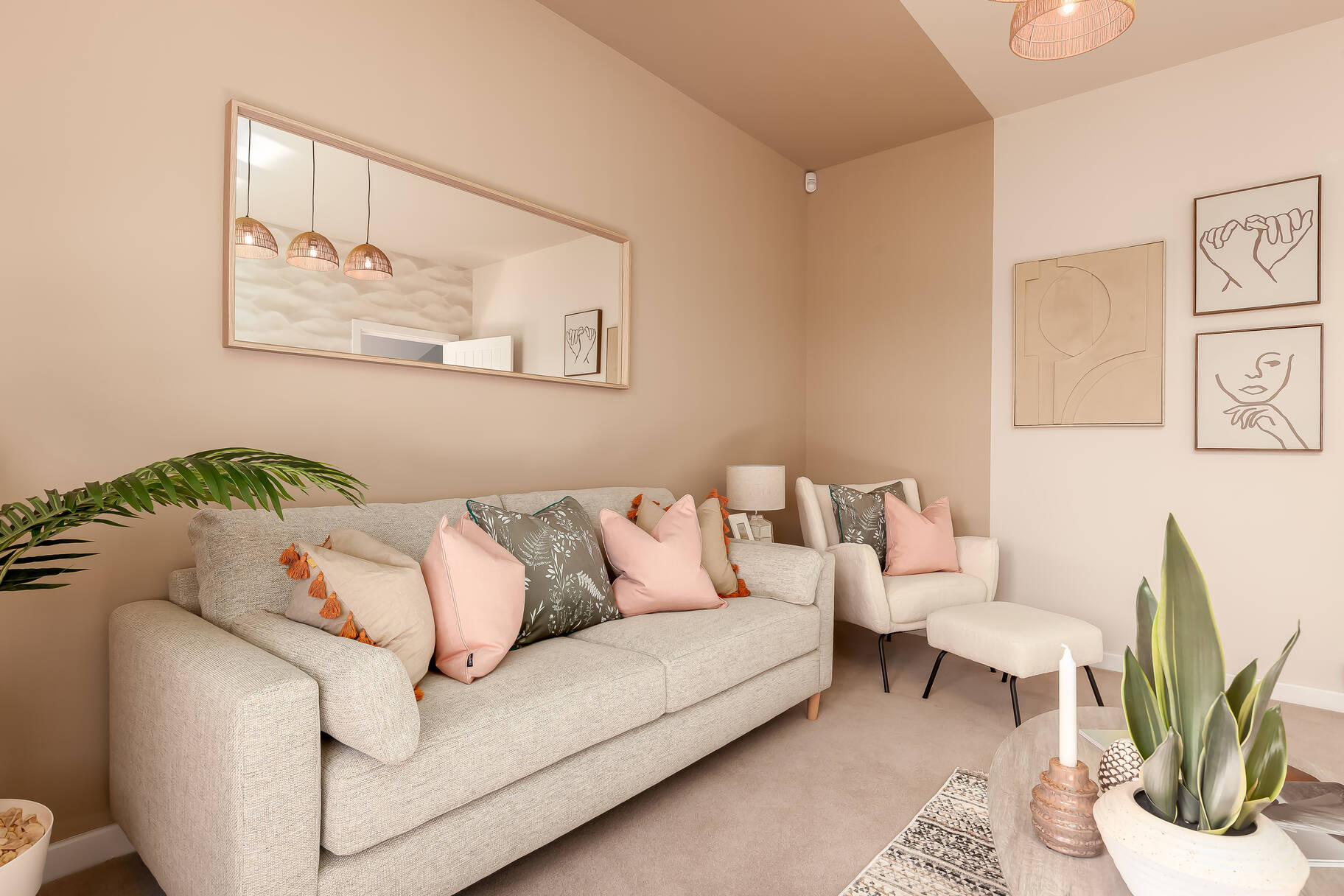How to choose a new sofa

The period between reserving a new home and moving in is often the ideal time to choose new furniture. Not only do new statement pieces signify a fresh start and complement the pristine décor of your brand-new home, they also allow you to save space in the removal van by disposing of tired objects whose best days are behind them. Yet choosing furniture for a property you haven’t moved into can be tricky. Will it fit beside the door and below the windowsill? Would the colour complement neutrally decorated walls, and might the fabrics clash against other furnishings destined for that room?
Even if you’ve already moved into a property, it’s often hard to envisage how an object like a new sofa will look in situ. While beds tend to be bought with comfort in mind, and freestanding cabinets major on practicality, sofas are often chosen primarily on aesthetic grounds. Whether you’re counting down to a completion date, or already making your new house a home, here’s how to pick a sofa that’ll provide dependable service for many years to come…
Focus on comfort, not style
Sofas tend to be statement pieces, but that shouldn’t stop them being practical. If you’re inclined to recline, ignore low-backed sofas which offer no neck support. Ditto cushion-back sofas – they’re soft rather than supportive, and slowly collapse over time. Being able to rest against a flat surface is often essential for people with long-term back or neck pain. Equally, a Chesterfield will look stunning in a showroom, but its diamond-pattern buttons won’t be comfortable against bare skin, and stretched leather often feels unduly firm to sit on.
Choose your fabrics with care
If your new living room is south facing, a leather sofa might not be the best idea. Leather is heat-sensitive, and direct sunlight may make it uncomfortably hot as well as accelerating cracks. Bare skin also sticks to leather more easily than fabric, though the latter will harbour more allergy-triggering dust if it’s not regularly vacuumed. Cats may be tempted to sharpen their claws on rough hessian-style coverings, and materials like velvet attract dog hair, which will also show up more on darker fabrics. Conversely, light colours betray stains more easily.
Consider functionality
Reclining sofas are great for sprawling, but their scissor-action mechanisms could injure pets or children. A sofa with deep base cushions may be safer, allowing you to relax without any adjustment. L-shaped sofas are ideal for occasionally sleeping on, though modern sofa beds have overcome their ancestors’ tendency to be good at one function but not the other. Pull-out sofa beds have a dedicated mattress, whereas fold-out sofas use the same backs and bases, so they tend to be less supportive. Always test a sofa bed in both configurations before buying it.
Measure for fitment
If you’re buying a new property, ask your sales advisor if there are any unoccupied examples of this house style on-site, or at nearby developments. Take a tape measure along and work out exactly how much space is available for a new sofa. (You can do similar calculations with property schematics, though marketing floorplans aren’t always fully to scale.) Consider the location of sockets, switches and windowsill heights when choosing a sofa location. Factor in the space needed for additional furniture like tables, freestanding lamps and bookshelves, too.
Back to Latest Posts




